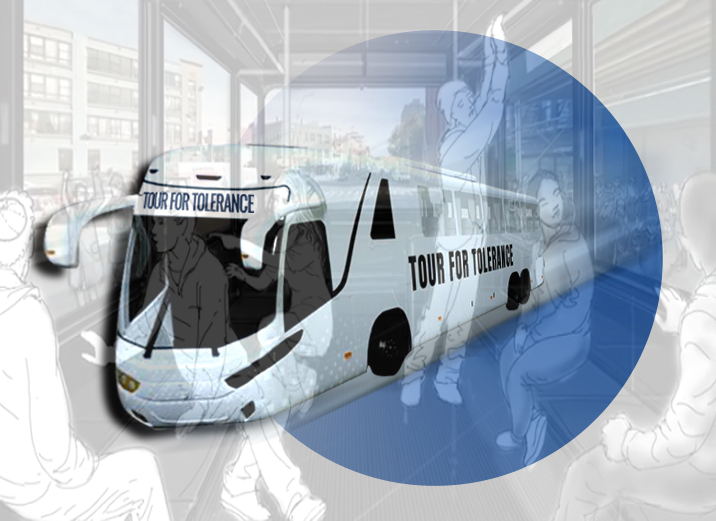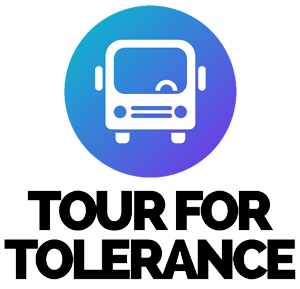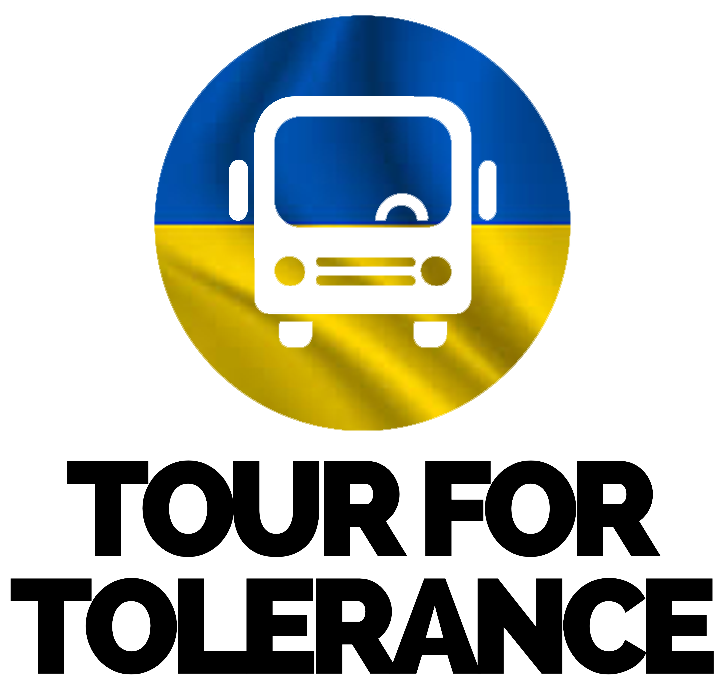
HOW THE JOSHUA WEINER TOUR FOR TOLERANCE BUS WORKS
The bus will arrive at the assigned school, and aboard the bus will be an educator and one or more of the following:
- A Holocaust survivor
- An African American senior
- Members from other ethnic groups
- An assistant
- The bus driver
Students will be virtually transported to different places and historical moments as they enter the bus. There they will be able to interact with the holograms depicting Holocaust survivors and historical individuals/ backgrounds conducive to that moment in history. The students will be allowed to ask questions as they learn how to react when bullied or mistreated because of who they are or who/ what they represent. They will depart with constructive ideas on how best to act and react to hate and intolerant behavior.
Less than 35,000 Holocaust survivors remain in New York, and one of our first goals is to get most NYC middle and high school students to see and hear the story of a Holocaust survivor before they are all gone.
TOUR FOR TOLERANCE EXHIBIT: ENGAGE, INFORM, EMPOWER
PART 1
The exhibit takes place on a bus, which remains stationary at schools and other places it visits. Using video and accompanying oral histories, however, the bus will seem to drive off and take the students on a journey through contemporary society and history. An element common to nearly all historical and current instances of genocide, discrimination, intolerance, and bullying is transforming an everyday landscape into a strange and threatening one. These terrible events begin literally in ordinary neighborhoods. Accordingly, once the students are seated, LCD screens fill the windows with changing scenery that is initially familiar but soon becomes more thought-provoking. Various scenes and vignettes dealing with intolerance and displacement from both the past and the present begin to appear in the windows, not blocking out the contemporary streets but superimposed over them, making the point that such things can and do happen anywhere, at any time. Some of these scenes will be historical footage; some will reflect the front pages of yesterday’s newspapers and the Internet.
They will include such things as:
- Jews assembling with their luggage at a deportation point in Poland or France in the late 1930ies and 1940ies
- Civil Rights Marches in the 1960s and Lynchings
- Scenes from the Cambodia war in the 1970ies, Rwanda in the 1990ies, and Syria from 2011- present
- Charlottesville, Virginia, in 2018
These are complex and disturbing subjects, but the material shown will be age-appropriate, not overly explicit, violent, or graphic. The aim of the experience is not to traumatize students but to explain things that have happened over and over throughout history, and are still happening, to create an experience that has a positive impact on their own lives and behavior.
PART 2:
Part 2 will be on individuals who managed to survive such experiences and make significant contributions. Assisted by a tolerance educator, each student will choose one of the witnesses to interview. Via digital technology, students will select from a menu of questions to pose the witnesses. Some questions will be straightforward: “What did you take with you when you left? Who did you go with?” Other questions will be more complex and reflective. Each question will elicit an answer that will lead to the revelation of more of their chosen subject’s story, which will be delivered via both videos and text messages. The students will also read letters and look at photographs and other materials to arrive at a fuller understanding of the context and background of the witnesses’ story and the more extensive history of which they were a part. Each story will ultimately deliver an overriding message about truth, personal action, and social responsibility. This message will not be falsely upbeat or gloss over hard facts, but to clarify that everyone has choices, and the ability to make at least some slight positive difference, even in the most challenging circumstances, daily.
PART 3:
One of the challenges of projects like this is how to educate youth and make a lasting impression that empowers them in their daily lives. Few experiences are more mundane than riding a bus. Still, the story of Rosa Parks is an excellent example of how such an experience can lead to something of far greater significance. Exposing young people to the stories of famous historical figures is inspiring. There is much to be learned from their actions, but asking students to be or emulate “heroes” is overly dramatic and potentially even irresponsible. Asking students to be mindful in their daily lives about what they have learned on the Tour is both a more reasonable and more effective strategy. In discussions guided led by a tolerance educator, in Part 3, students relate the historical experience to their own lives, including bullying and trolling on social media. Students can submit cell phone videos of family and friends discussing incidents of intolerance and tolerance for posting on our website or used as part of the Tour exhibit. Schools will be offered a follow-up curriculum developed by leading tolerance organizations and encouraged to launch community-based tolerance projects.
Young people in America are surrounded—besieged—by intolerance. Our society is divided across the social and political spectrum amid a profound crisis. The Tour aims to make a difference and be part of the solution by bringing tolerance education directly to students. Student Tour visits will continuously be assessed to optimize the experience and the funding towards the 5-year goal of touring ten buses that collectively serve 500,000+ students a year in regions across the country.

